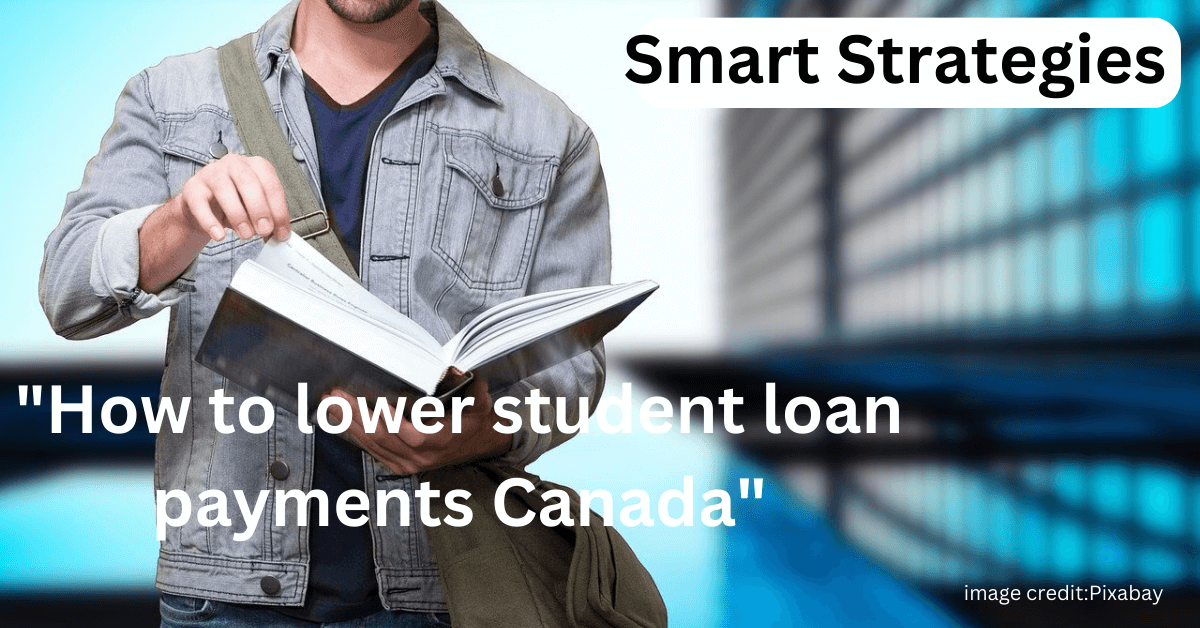“How to lower student loan payments Canada”:Smart Strategies Managing student loans can be a challenge, especially when monthly payments strain your budget. If you’re looking for ways to ease the financial burden, there are effective strategies available to lower your student loan payments in Canada. Whether you’re a recent graduate or someone still navigating repayment, this guide offers actionable tips to help you stay on top of your loans without sacrificing your financial well-being.

Understanding How to Lower Student Loan Payments in Canada
Before diving into strategies, it’s essential to understand how student loans work in Canada. Loans are typically issued by the federal government (Canada Student Loans Program, or CSLP), provincial governments, or private lenders. Your repayment terms, including the interest rate and payment schedule, depend on the type of loan you have. Federal and provincial loans often come with flexible repayment assistance programs, which are a great starting point if you’re struggling with payments.
1. How to Lower Student Loan Payments in Canada- Apply for the Repayment Assistance Plan (RAP)
The Repayment Assistance Plan (RAP) is one of the most effective ways to lower student loan payments in Canada. Offered by the government, RAP adjusts your monthly payments based on your income and family size.
Here’s how it works:
- If your income falls below a certain threshold, your payments could be reduced or even paused temporarily.
- During RAP, the government may cover a portion of your interest payments to prevent your loan from growing.
- You can reapply for RAP every six months as your financial situation changes.
This program ensures that your loan payments remain manageable, providing relief to those experiencing financial difficulty.
2. Extend Your Loan Term
Another option to lower student loan payments in Canada is to extend the repayment term. Federal loans, for example, have a standard repayment term of 10 years, but you can request an extension of up to 15 or 25 years.
Benefits of extending your loan term:
- Smaller monthly payments, making them easier to manage within your budget.
- Avoiding the risk of default, which can damage your credit score.
However, keep in mind that extending your loan term may increase the total interest you pay over the life of the loan.
3. Consolidate Your Loans
If you have multiple student loans, consolidating them into a single loan could simplify your repayment process and potentially lower your payments. The National Student Loans Service Centre (NSLSC) offers a consolidation program for federal and provincial loans.
Benefits of loan consolidation include:
- A single monthly payment instead of juggling multiple due dates.
- The option to extend the repayment period, reducing your monthly payments.
- Potentially qualifying for lower interest rates if you consolidate through a private lender.
However, proceed with caution when consolidating federal or provincial loans with private lenders, as you may lose access to government benefits like RAP.
4. Make Use of Payment Deferrals
If you’re facing temporary financial difficulties, you may be eligible for a loan payment deferral. Both federal and provincial loans offer deferment options for borrowers who are unemployed, underemployed, or experiencing financial hardship.
Deferrals allow you to pause payments for a set period, giving you time to stabilize your financial situation. During this time, interest may continue to accrue on your loan, so it’s important to understand the long-term implications before opting for this solution.
5. Explore Provincial Assistance Programs
In addition to federal initiatives, many provinces in Canada have their own repayment assistance programs. For example:
- Ontario offers the Ontario Repayment Assistance Program (ORAP), which is similar to RAP but tailored for Ontario residents.
- British Columbia provides loan reduction programs for borrowers in high-demand fields like healthcare.
- Nova Scotia offers interest-free loans for graduates who stay and work in the province.
These programs can further reduce your student loan payments, making it easier to manage your finances.
6. Negotiate with Private Lenders
If you have private student loans, negotiating with your lender could be an effective way to lower your payments. Some private lenders offer:
- Lower interest rates for borrowers with good credit.
- Temporary payment reductions or interest-only payment options during financial hardship.
- Loan refinancing options that could lower your interest rate or extend your repayment term.
Make sure to contact your lender early if you’re struggling to make payments. Open communication can lead to a solution that benefits both parties.
7. Consider Refinancing
Refinancing your student loans could be a smart move if you qualify for a lower interest rate. This involves replacing your existing loan with a new one that has better terms. Refinancing is especially beneficial for private loans but can also be applied to federal and provincial loans in certain cases.
However, keep in mind that refinancing federal or provincial loans with private lenders may cause you to lose access to government assistance programs. Weigh the pros and cons carefully before proceeding.
Tips for Long-Term Financial Health
While focusing on how to lower student loan payments in Canada, it’s also important to adopt habits that promote long-term financial health:
- Budget Wisely: Track your income and expenses to identify areas where you can save money.
- Build an Emergency Fund: Having a safety net can help you avoid financial stress during unexpected situations.
- Increase Your Income: Consider part-time work, freelance opportunities, or upskilling to boost your earning potential.
- Pay Extra When Possible: If you receive a financial windfall, such as a tax refund, use it to make extra payments on your loan. This reduces the principal and the overall interest.
Final Thoughts
Lowering student loan payments in Canada is achievable through a combination of government programs, extended repayment terms, and proactive communication with your lender. Programs like RAP, loan consolidation, and refinancing provide practical solutions tailored to diverse financial needs. By exploring these strategies and making informed decisions, you can ease the burden of student loans and focus on building a stable financial future.
With the right approach, managing student loans becomes less daunting, allowing you to achieve greater peace of mind while working toward your financial goals.

